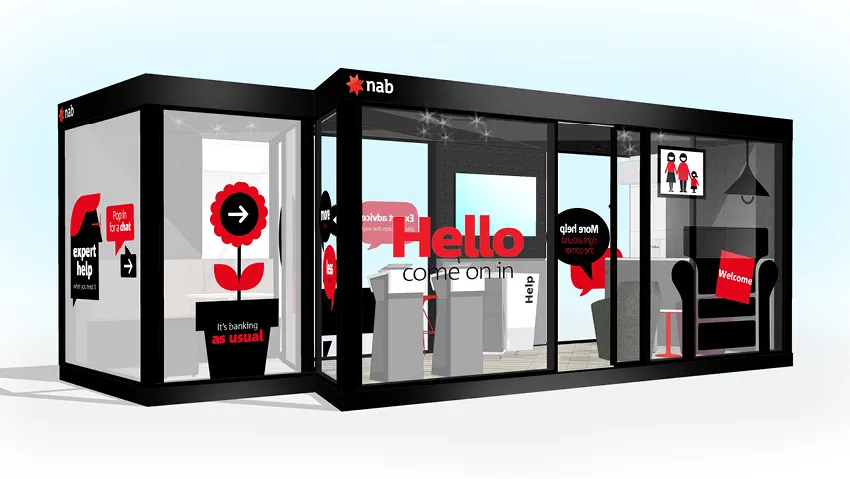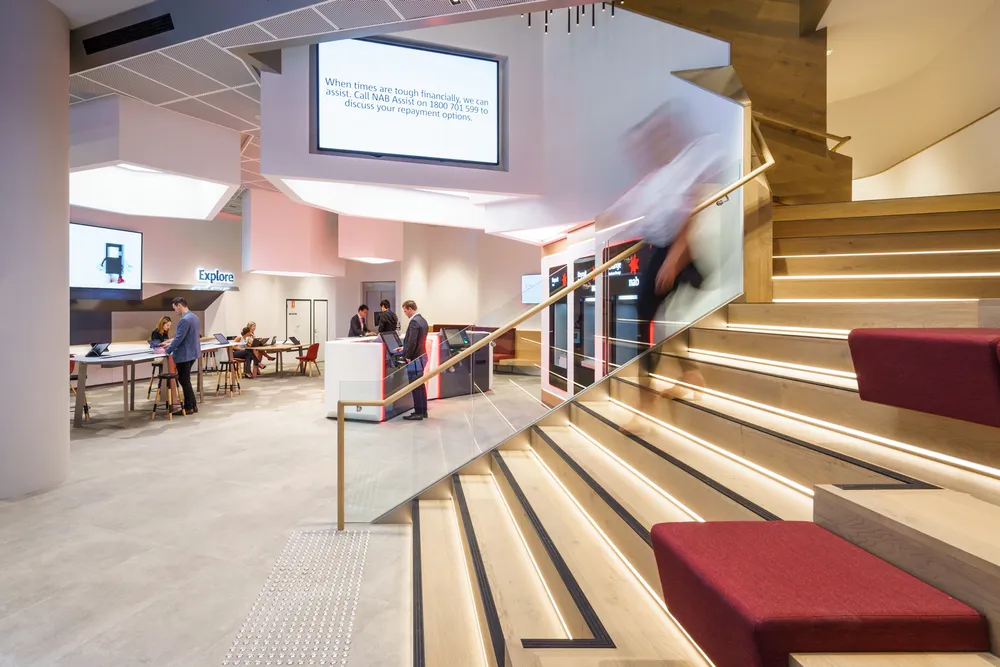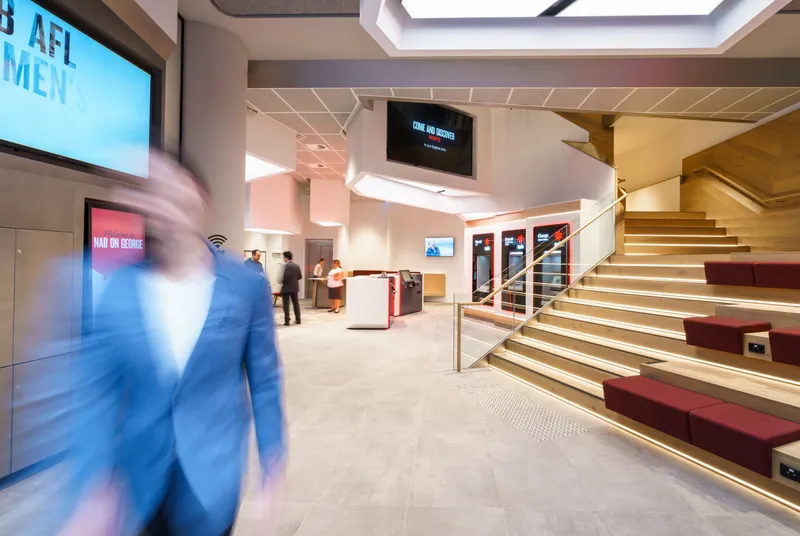
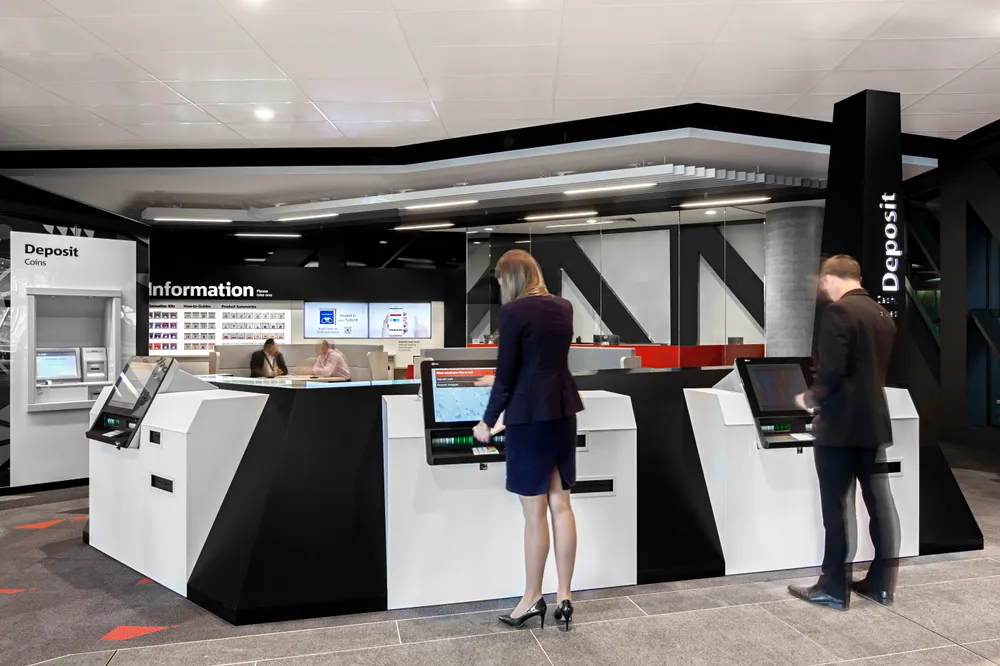
Design_Social mapped the customer journey and identified some key moments (touchpoints) in banking that called for something different. The process led to a robust, future-proofed design that could be infused throughout the physical network at an omni-channel level. This complex, multi-layered strategy spans the virtual world and connects into the physical entity both hard and soft. Put simply, it’s a solution that embraces technology, fit-out and people.
The first new NAB Retail store opened in Docklands, Melbourne in early 2012. It was centred on open-plan teller and customer help zones. There were multiple sales areas ranging from those where staff stood out in the open ready to greet customers to semi-private café booths and sectioned-off private meeting rooms.
The socialising of design is nothing new: design should always respond to human behaviours and needs. But design_social goes one step further.
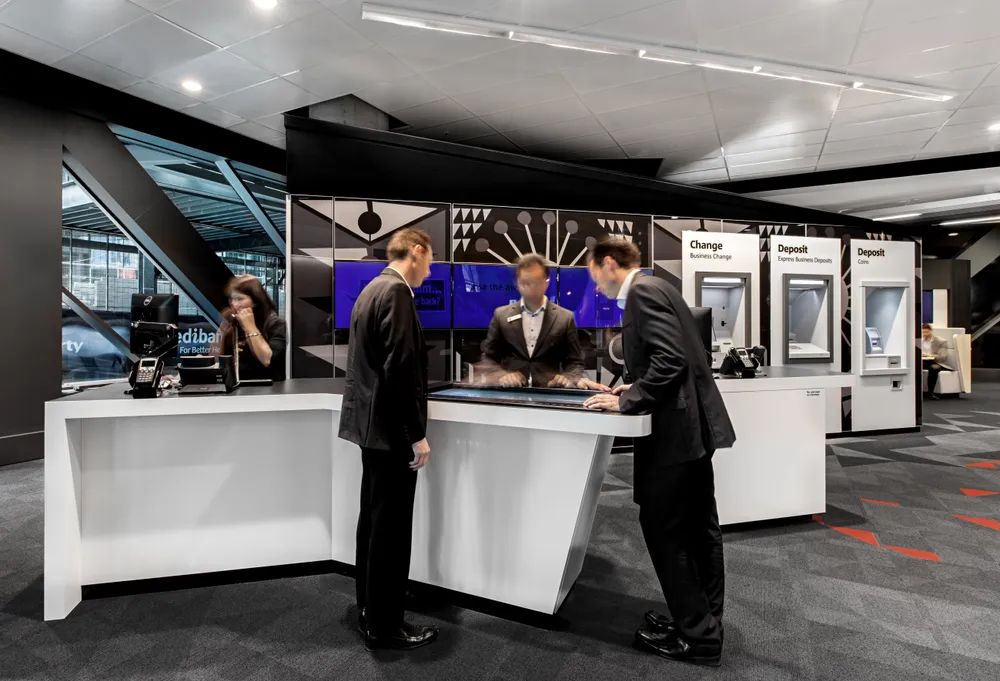
One of the biggest challenges for banks is to be seen as a conventional retailer since they don’t have the physical products to attract customers and instigate interest and conversation. Through the testing phase, Warren and Mahoney identified the need to streamline customer types through a ‘managed floor’ philosophy. Faster non-cash transactions were split out of the main teller queue by positioning staff as journey ‘interrupters’ at the store entrance. These are not concierge positions (as other banks are doing) but an integral part of the transaction line. The result? A decrease in queue time and an increase in customer/banker connectivity – a more social space.
The financial markets are becoming ever more complex. While technology can help customers to partially understand products, banker experience can personalise the offer – an important differentiator in today’s self-service world. Design_Social meant putting the workstations out on the floor with a soft boundary to customer areas. Most competitors continue to install expensive glass boxes where staff can hide out and customers can’t access them. This new way of working at NAB was embraced by the staff and contributed to the overall experience in a few surprising ways. It allowed a more secure environment with all eyes facing the entry doors; bankers on the floor were able to assist customers more quickly; it created a no-barrier, egalitarian space for customers and finally, staff found that the flexi-desk environment enabled better communication and team collaboration.
Warren and Mahoney has since applied these successful Design_Social strategies to other NAB formats including their Smart Stores, Business Centres, and Modular.
